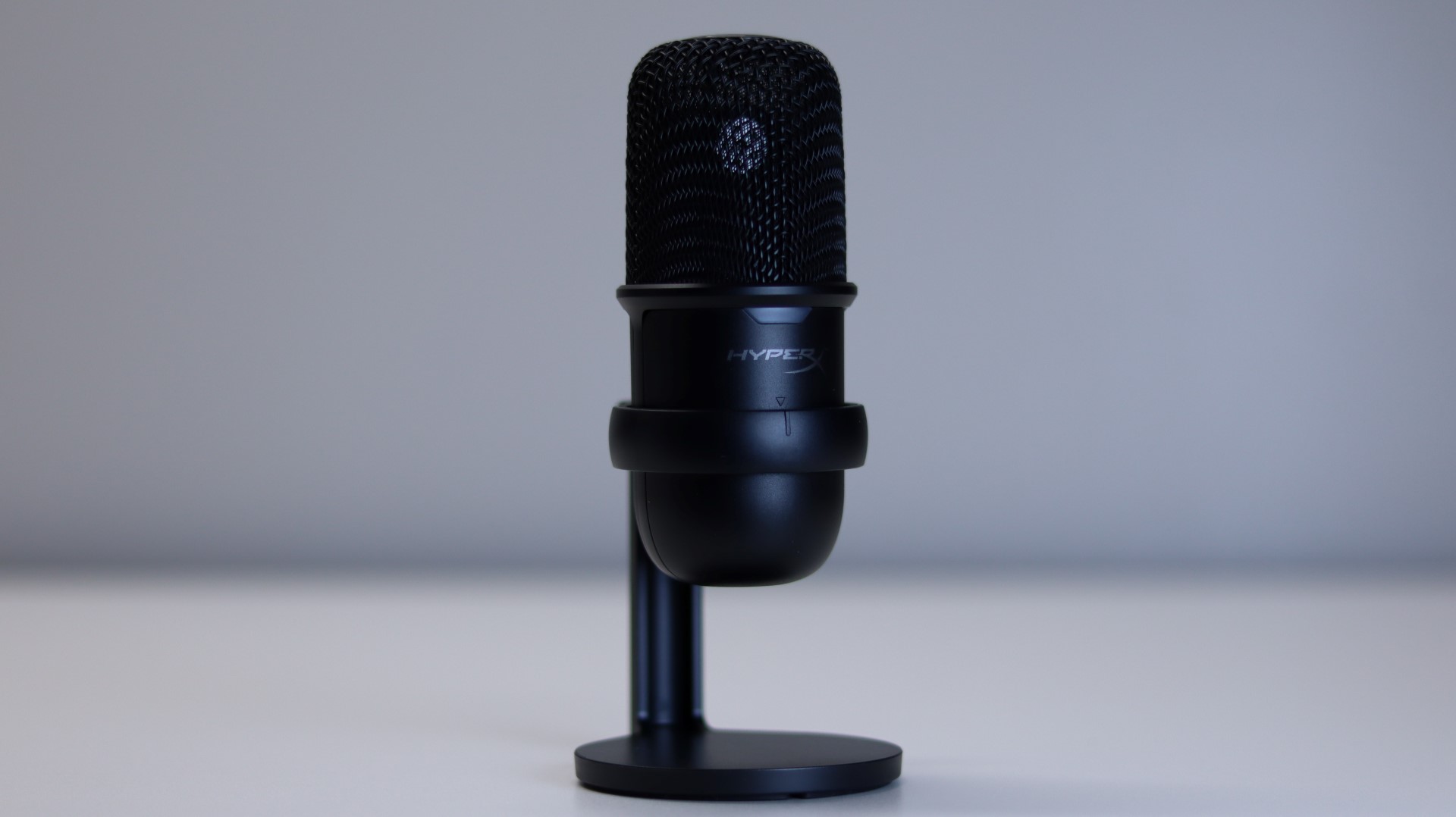SoloCast Setup
Setup of the SoloCast couldn’t be easier, as it was quickly recognized by Windows and made available as a recording device. Simple tweaks to Discord and Streamlabs OBS were needed to make it our input device, but other than that, the HyperX SoloCast is really a great example of plug-and-play. That simplicity in installation also leads us to our first downside that we encountered with the SoloCast. Unlike its larger brethren, there are no adjustments to be made on the SoloCast itself, outside of the mute function; all adjustments will need to be made within your operating system and any additional audio applications you may wish to use. All that said, if you are looking for a “set it and forget it” microphone, this may be just what you are looking for.
SoloCast Usage
Like all of our microphone reviews, the SoloCast was used in multiple scenarios throughout our testing period. With just the single, Cardioid polar pattern, the SoloCast is best suited for podcasting, audio recording from a single source, and streaming. The directional audio pickup of a Cardioid pattern really favors being right in front of the microphone for the best results. Our most used scenarios are podcasting and streaming, though I did use the SoloCast in a few online meetings where I was called out for having great audio. With regards to mounting, the integrated threads at the bottom of the microphone body made attaching the SoloCast to the arm a breeze, though we do wish the cable was longer to allow for more flexibility with regards to how far it can be away from the nearest USB port. This mounting method allowed us to have the microphone right in front of us for great audio pickup of our voice, and reduced audio pickup from our keyboard and mouse. This is especially important during our review, as we don’t test with NVIDIA RTX Voice enabled, which would cut out all of the background noise.
Outside of the audio aspects, the SoloCast’s other features were top-notch as well. The tap-to-mute sensor at the top of the microphone works just like we have seen in other microphones, and the red LED indicator glows red when unmuted, and flashes on and off while muted. With regards to the included stand, it does its job just fine, providing a sturdy base with multiple points of articulation to position the microphone just how you would like, including the ability to swivel side to side as an additional positioning option.
As we have noted in our previous microphone reviews, the sound quality improvement when moving from a headset-based microphone to a dedicated condenser-style microphone is night and day. Below is an sample audio recording from the HyperX SoloCast, as well as many of our previously reviewed microphones.
HyperX SoloCast
HyperX QuadCast S
Elgato Wave:3
Corsair VOID Pro
Thronmax MDrill One Pro
Samson G-Track Pro
MXL BCD-1
MXL Tempo
HyperX QuadCast
Corsair VOID Pro


